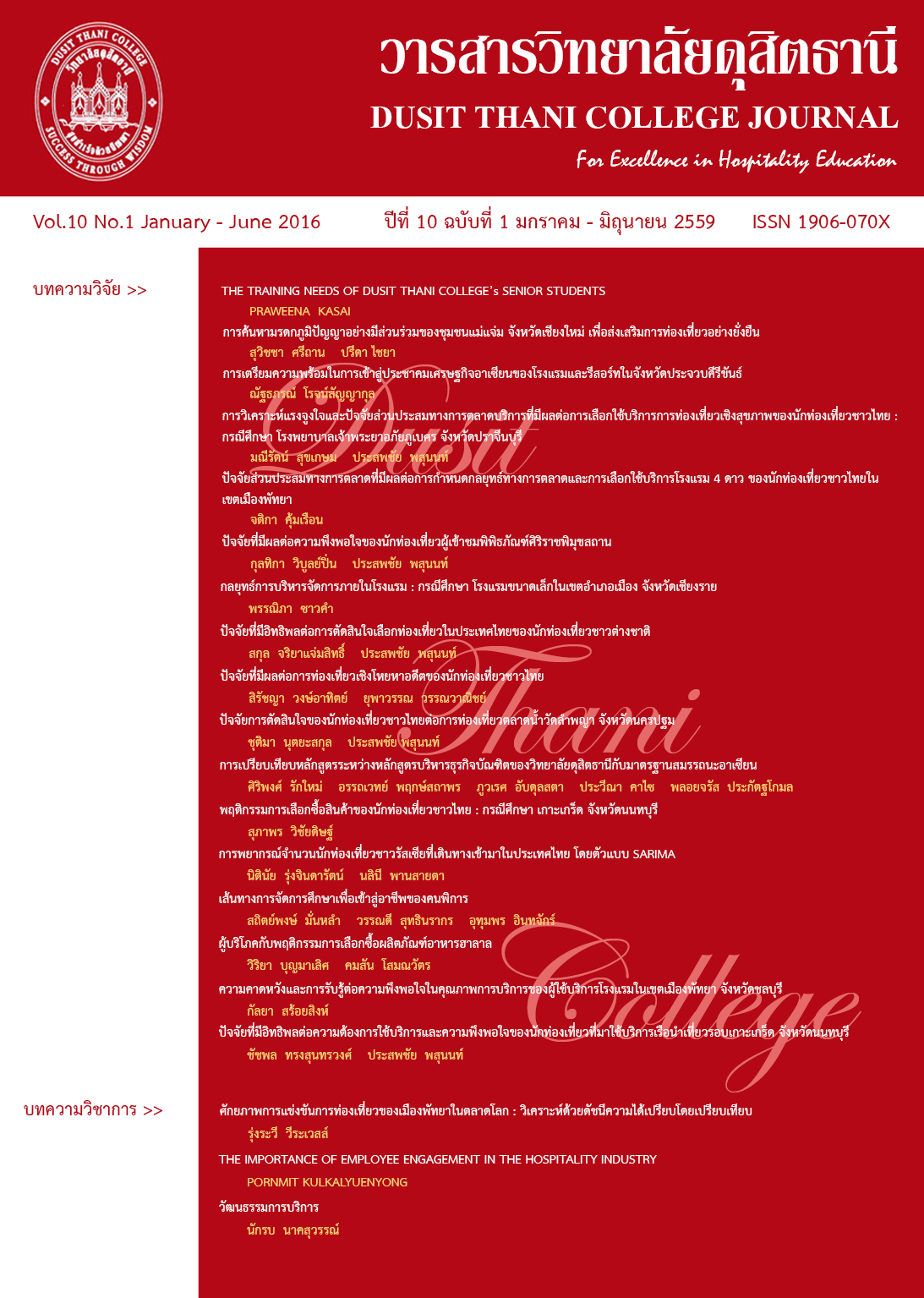TOURISM COMPETITIVENESS OF PATTAYA CITY IN THE WORLD MARKET: COMPARATIVE ADVANTAGE INDEX ANALYSIS
Main Article Content
Abstract
This article aims to analyze the tourism competitiveness of Pattaya City in the global market by using the concept of comparative advantage which is presented in the form of Tourism Comparative Advantage index (TCA) under the idea that a large number of visiting tourists to visit can reflect a satisfaction of tourism services in the city. TCA index is calculated by using data from Euromonitor international. The results showed that among cities of tourism around the world, Pattaya city has highest TCA index value, followed by Macau and Antalya, respectively. Comparing to cities of tourism in ASEAN, Pattaya city has higher tourism competitiveness than Kuala Lumpur (Malaysia) and Singapore. Besides, Pattaya also has higher competitiveness over other scenery towns like Phuket and Chiang Mai. However, most of economic data of Pattaya City is not collected by local level but there are hidden inside provincial data. Since Pattaya City is located in Banglamung District in Chonburi province, so, Pattaya economic data, especially Gross Domestic Product of Pattya, are concealed inside data of Chonburi province, known as Gross Provincial Product (GPP) of Chonburi. Therefore, in order to analyze tourism comparative advantage index in several dimensions, Pattaya City should collect and develop its own data, including number of tourist and income from tourism, as well as data system management which will be benefit and useful for sustainable tourism development in Thailand.
Article Details
Article Screening Policy
- All research and academic articles to be published must be considered and screened by three peer reviews in the relevant field / article.
- All articles, texts, illustrations and tables published in the journal are the personal opinions of the authors. Editors don't always have to agree. And no responsibility whatsoever is the sole responsibility of the author.
- The articles to be published must never be published. Where did you first publish? And not in the consideration of other journals If the audit found that there has been a duplicate publication It is the sole responsibility of the author.
- Any article that the reader sees as being plagiarized or impersonated without reference. Or mislead the work of the author Please let the journal editor know it will be your greatest blessing.
References
Fourie, J. (2011). Travel service exports as comparative advantage in South Africa. South African Journal Economic and Management Sciences,14(2), 210-228. Retrieved from https://sajems.org/index.php/sajems/article/view/146/67
Pattaya City. (2012). Pattaya City Hall | Pattaya City Hall | Retrieved fromhttps://www.pattaya.go.th
Peterson, J. (1988). Export Shares and Revealed Comparative Advantage. A Study of International Travel.Applied Economics, 20(3), 351-365.doi:10.1080/00036848800000048
Seyoum, B. (2007). Revealed comparative advantage and competitiveness in services: A study with special emphasis on developing countries. Journal of Economic Studies, 34(5), 376-388. doi:10.1108/01443580710823194
Tanompongphandh, T., Uttama, N., &Buadapthip, T. (2013, December). A Preliminary study of tourism competitiveness in Thailand: An approach to reveled comparative advantage index. Retrieved from https://obels-mfu.com/sites/default/files/WorkingPaper_Dec2013_1.pdf
Wei, Y., Fang, R., &Feng, Y. (2011). The RCA index comparison of five countries: The analysis of potential impact upon Chinese tourism export and e-tourism services' trade. Artificial Intelligence, Management Science and Electronic Commerce (AIMSEC), 5242-5245.doi:10.1109/AIMSEC.2011.6011162


